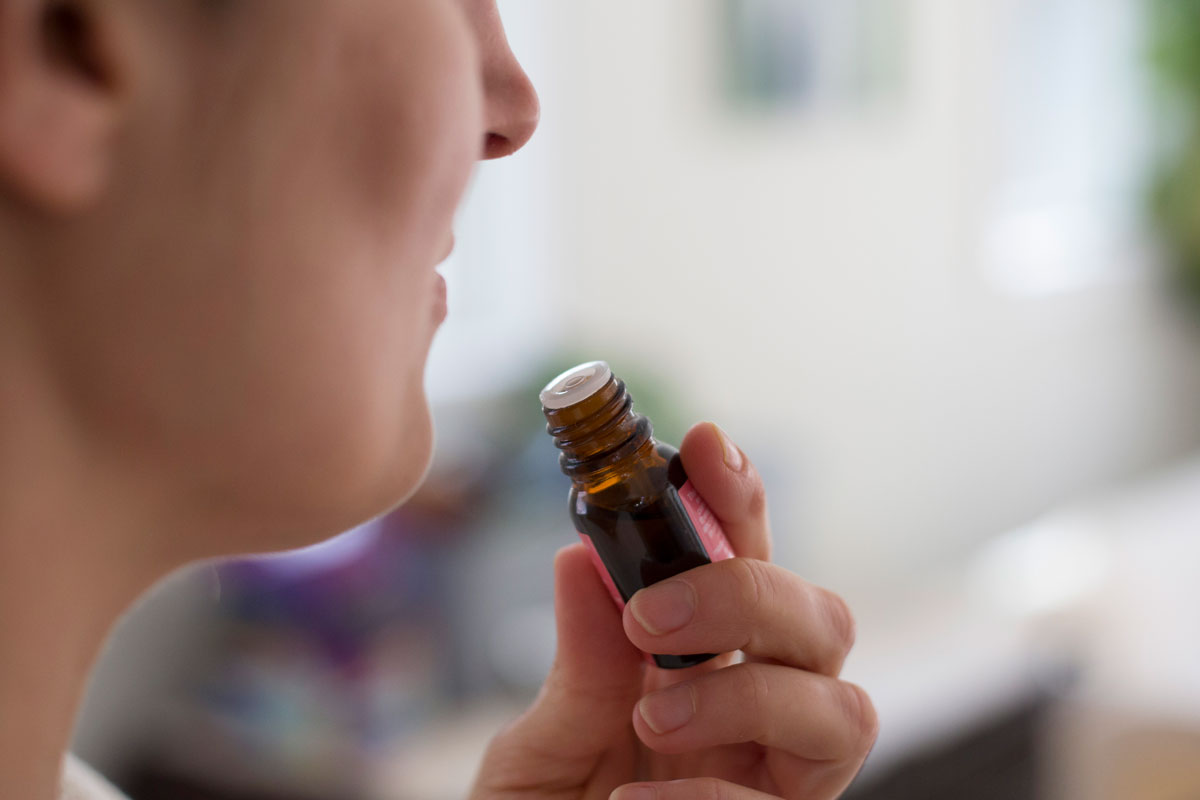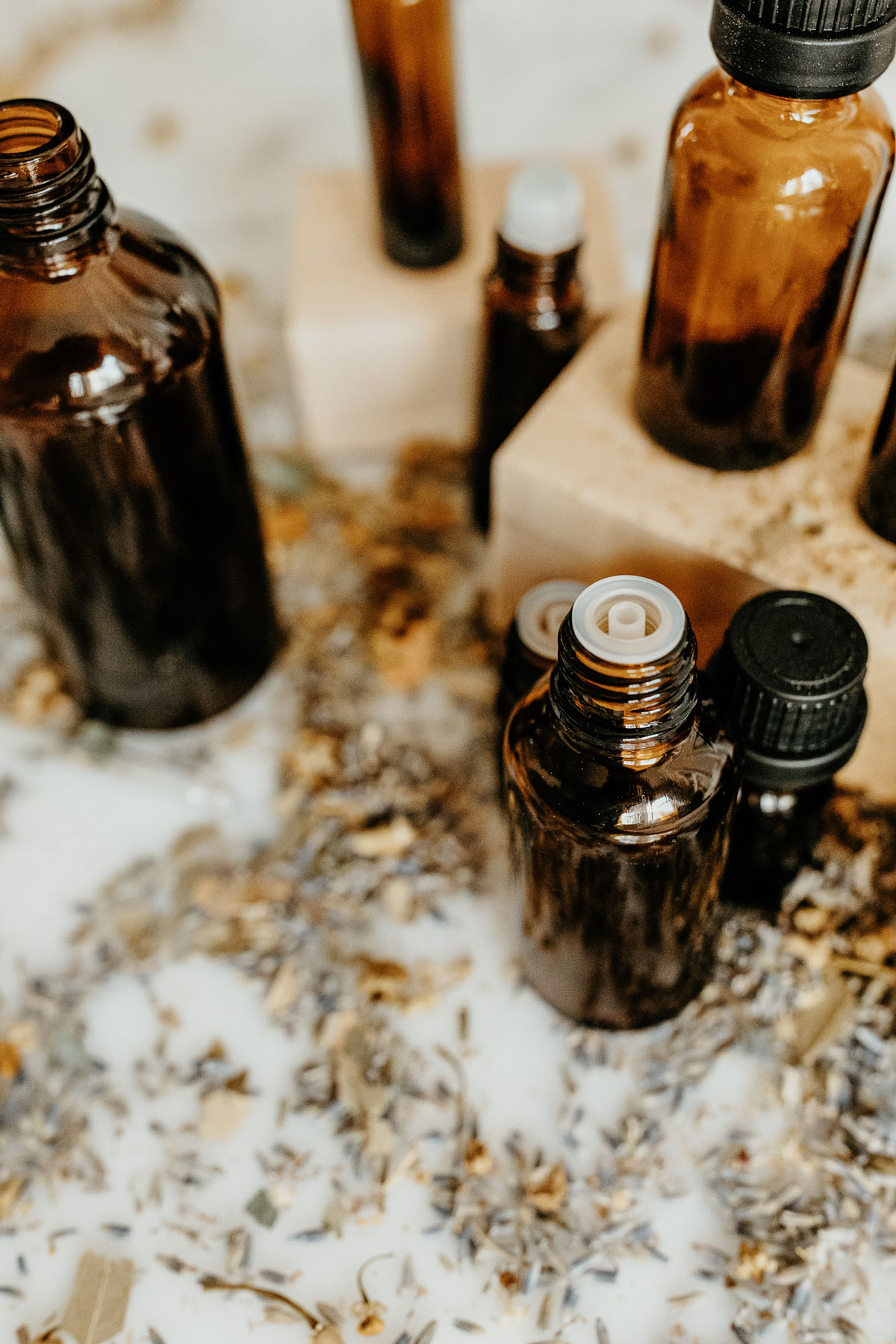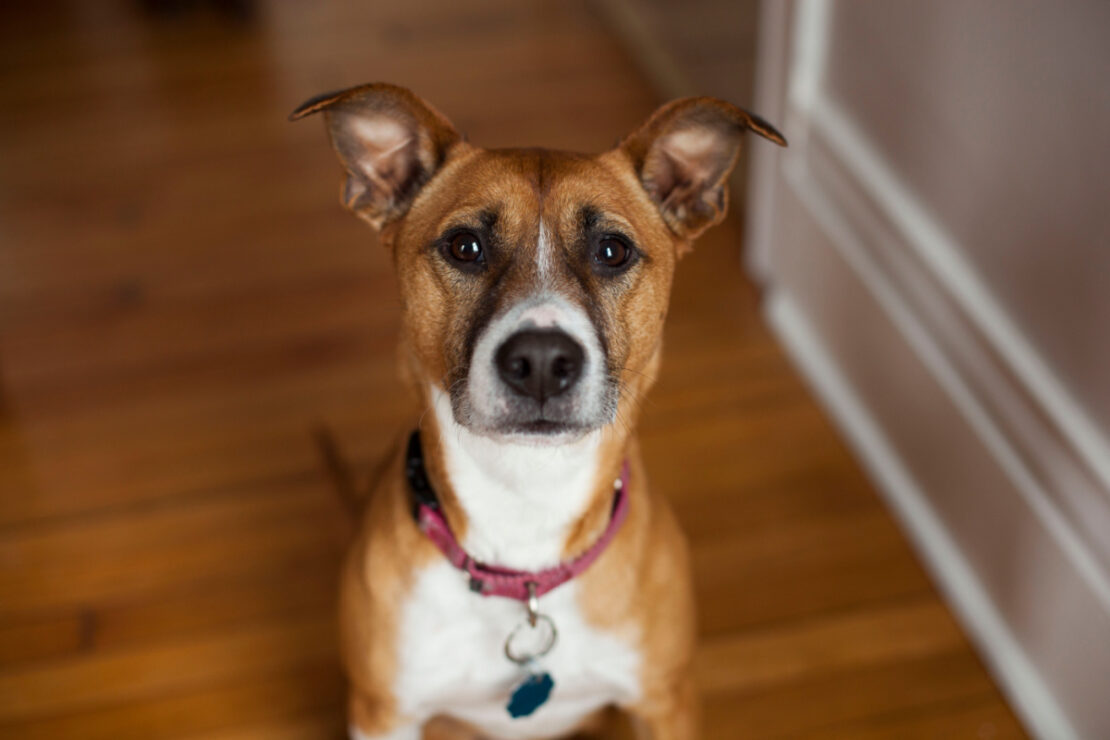
Essential Oils and Pets: How to Use Them Safely
If you use botanicals for your own health and wellness, you have probably wondered about essential oils and pets. How might you use herbs or essential oils with your pets and animal companions? Veterinary visits are expensive, so keeping our animal companions healthy is also often a financial priority. Yes, you can use essential oils safely with pets if you follow some relatively simple guidelines.
To understand how we can use essential oils with our pets and animal companions, we need to consider how our animals are different from us. The first difference is that most animals are covered in fur, feathers, or scales. Hair, especially, may cause essential oils to absorb across the skin into the body faster than what we experience on our human skin (Shelton, 2018.)
Animal senses also have a wide range of variability. Many of our pets have extraordinarily discerning olfactory senses. Some say that a dog’s olfactory sense is anywhere from 10,000 to 100,000 times as acute as ours is (Tyson, 2012.) Therefore, even if we cannot smell the essential oil we have just used, it may be overwhelming to our pets. The number one guideline for using aromatics with our animals would be to remember this and keep essential oil use as light as possible. It may be better to dilute essential oils for inhalation, as well as topical applications.
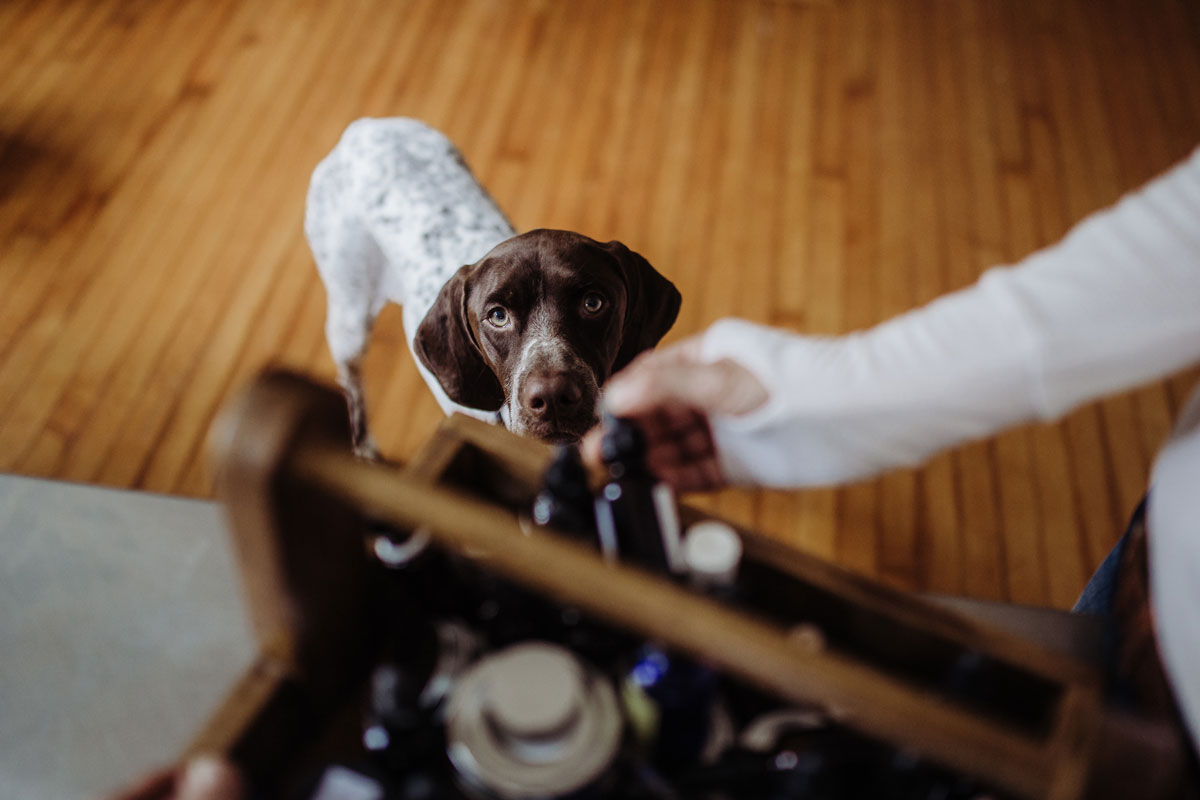
Animals also have very different metabolic rates and liver enzymes, affecting how quickly and effectively they break down essential oils. In some cases, an animal may tolerate much higher doses of an essential oil than a human. However, that same animal might only tolerate much lower amounts of a different essential oil. Therefore, one cannot accurately and safely extrapolate animal essential oil safety guidelines based on human essential oil safety information. (Shelton, 2018.)
Many animals also have grooming regimens where they might ingest essential oils applied on their fur or skin. This accidental ingestion is rarely a concern in humans, yet we need to consider this possibility when deciding where, what, and how to use essential oils with animals.
Knowing an animal’s health history before choosing a botanical support is just as important as knowing a person’s health history. A pet’s physical condition, age, sex, background, emotional state, medications, and aromatic preferences will interact with the essential oils the pet encounters, providing both appropriate indicators and contraindicators for essential oil use. Some animal species may not interact well with essential oils.
Passive and Active Exposures
To determine the amount of essential oil any individual must metabolize, one must consider both passive and active exposures. Any exposures within the home will contribute to overall dosages; therefore, one must consider all passive exposure. This is less of a concern for pets that live outdoors.
As with people, the first rule for using essential oils safely with pets is to keep them safely away from areas where pets may inadvertently contact the essential oil. Do not allow pets to knock over open bottles or get spilled essential oils on their paws or body. If storing essential oils in a barn or other facility that may get hot, keep the essential oils in a refrigerator, preferably in a locked container, if a lot of people have access to the refrigerator.
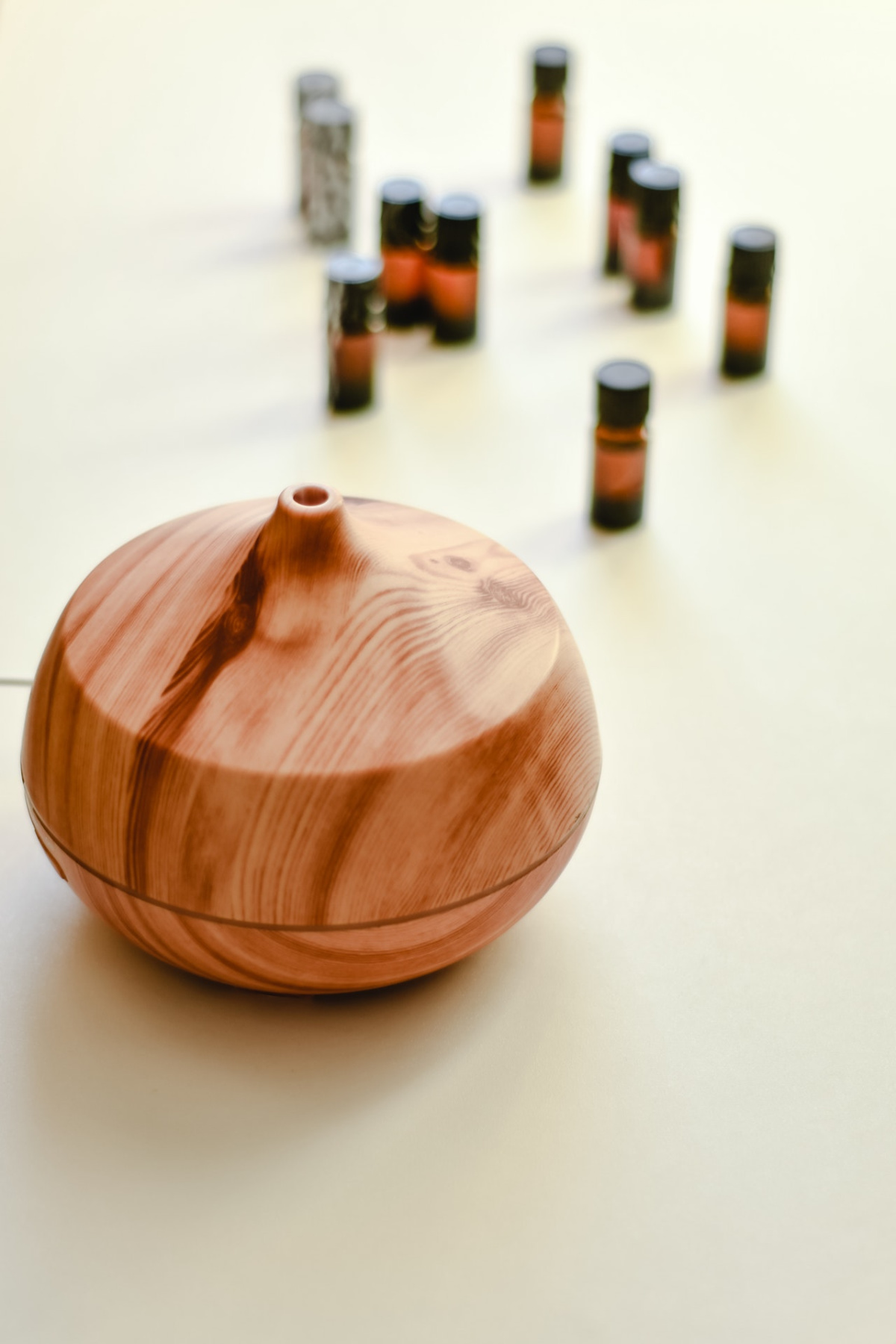
Passive Exposures
Our pets are exposed to all kinds of chemicals in their environment, from furniture off-gassing, to cleaning products residues, to food ingredients dropped on the floor, to air fresheners. With some forethought and simple precautions, we can keep these exposures from hurting our beloved pets. Three significant forms of passive essential oil exposure for household pets are diffuser use, cleaning products, and body care products.
Diffuser Use
- Keep diffusing light, in terms of both quantity of oil diffused and length of time that the diffuser runs. Diffusers that put essential oil droplets directly in the air are more likely to irritate a pet than a water-based diffuser.
- Keep diffusers away from where pets can knock them over or have them spill.
- Make sure the pet can leave the room where the diffuser is running if it chooses to do so.
- Special note for bird owners: diffusion in a home with birds is possible but requires even more care than with other animals (Shelton, 2018; Tisserand, 2018).
Cleaning Products
- Just because we are using a “green” approach to our cleaning does not mean our cleaning products are completely safe for all situations. Remember that “natural” and “safe” are not synonymous terms.
- After using an essential oil-based cleaning product, be sure to rinse well any surface a pet might walk on. Try to prevent the cat from getting the essential oil on its feet.
- Keep pets out of the room while an essential oil-infused carpet powder is on the carpet. Try to use pet-safe essential oils, even if the pets do not walk on the carpet, until after it is vacuumed and the room ventilated.
- Do not use essential oil cleaners to clean aquaria, terraria, birdcages, or other small animal enclosures.
Lotions and Skincare Products
- Essential oils are not the only chemicals animals can ingest when they groom themselves. When putting a lotion or other topical ointment on your hands, be sure it is thoroughly rubbed in, or wash off any excess, before petting your pet.
- It is also best to discourage a pet from licking your hands after applying lotion. Some pets may like to do so, but that does not mean it is good or safe for them.
Active Exposures
Active exposures to essential oils occur anytime your pet comes in direct contact with an essential oil in a significant or intentional dosage, such as an essential oil-infused cotton ball in an animal’s kennel (inhalation) or an essential oil applied directly to an animal’s skin (topical or cutaneous application). Be sure the pet cannot eat the cotton ball or other essential oil source. Although some may know how safely to use essential oils internally with their animals, this topic is complex and beyond the scope of this article.
As with people, inhalation techniques are often the best approach to use with animals experiencing emotional challenges. This approach may work well for a pet that gets stressed when going to the vet or, as in the case of a pet rescue, pets with significant emotional issues. One example might be that if you usually diffuse a specific blend in your home, diffuse the old blend to help the pet adapt more quickly when moving your pet to a new home.
“Litteroma” is a term coined by Dr. Melissa Shelton, which refers to using essential oils in the litterbox. An easy way is to mix appropriate essential oils with baking soda to sprinkle on and mix into the litter. Keep in mind that a cat might avoid a litter box that smells odd, so it is a good idea to have two boxes available to the cat—one with the essential oil and one without. The essential oil might simply deodorize the litter box, or it might be specifically for the cat’s health. I use a digestive blend in my cat’s litter box to help her with her digestive issues.
If your pet wears a collar, a drop of essential oil on a removable strip of fabric attached to the collar can act as a passive diffuser while providing an active dose of essential oil. Keep in mind that the pet cannot escape this aroma, so watch the pet carefully for a while after applying the oil. The strip of fabric is easy to remove if the scent is too much or when the strip is no longer needed. It could also be attached outside a kennel or in the room with the pet, as appropriate. Make sure the pet cannot eat the fabric.
“Petting” is one way to apply essential oils directly to a pet. Place a small amount of the diluted essential oil blend in the palm of one hand, then rub the two hands together until much of the oil is absorbed. Then pet the animal. The amount of oil to leave on the hands before petting determines the dose, so smaller, younger (or much older), or more fragile animals should receive less of the blend. In contrast, larger, generally healthy adult animals (dogs and horses, for instance) may benefit from a larger application or dose.
Larger doses do not mean lower dilutions. Larger animals often still need very high dilutions, such as 0.5-2%, but a greater amount of the blend would constitute a larger dose.
Compresses, which, mentioned below, work especially well with hydrosols, and bath applications are excellent ways to apply essential oils to pets, especially those with injuries.
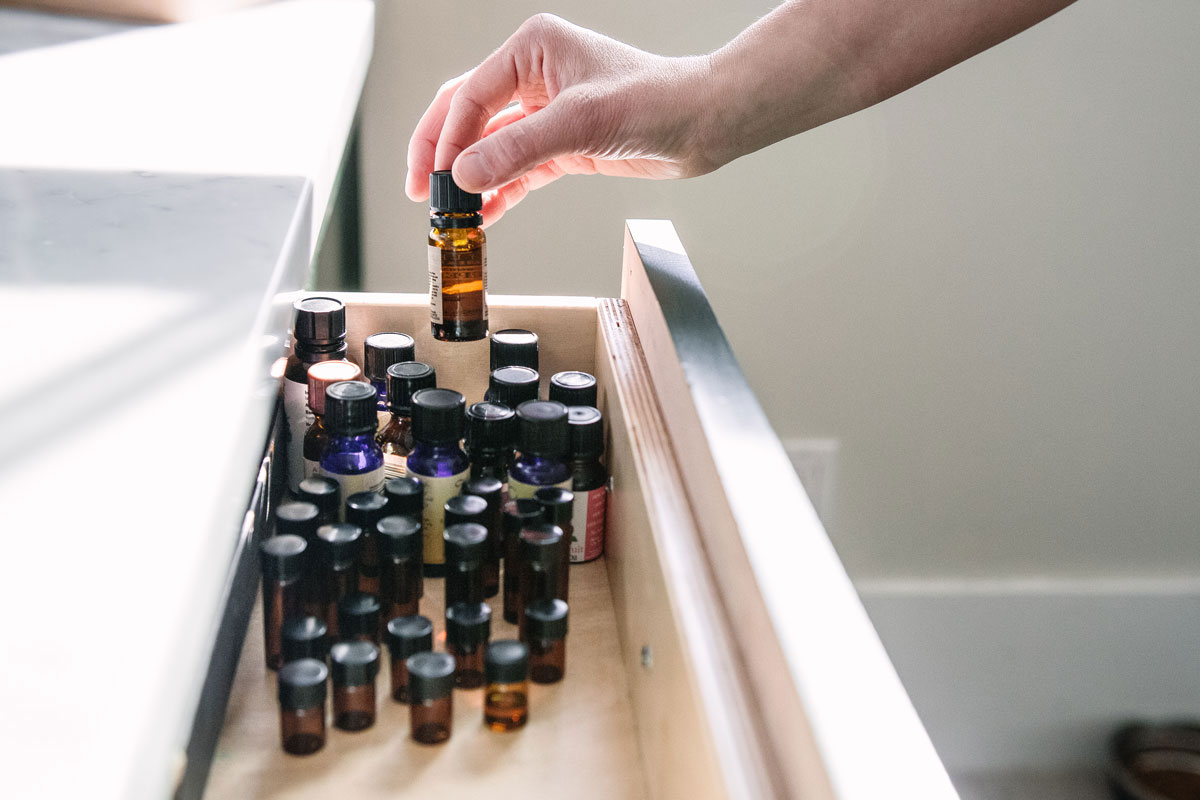
Cautions and Adverse Reactions
“Ear tipping” and applying essential oils to a pet’s paws are two unpleasant techniques people on the internet frequently recommend. Both have more significant risks than benefits and are not advisable techniques. As with people, do not apply essential oils directly to pet mucous membranes or into any orifice (eyes, ears, nose, etc.). Do not apply them neat (without dilution). Avoid neat oil applications, such as “Raindrop Therapy,” a technique with far more risks than benefits; however, using similar techniques with properly diluted oils may be appropriate in some circumstances.
The most important general guideline is: When in doubt—don’t.
Here are some behaviors that let you know the essential oil may be adversely affecting your pet:
- Drooling
- Rubbing face on the floor or carpet
- Coughing or difficulty breathing
- Crying, whining, panting
- Depression
- Lethargy
- Stumbling walk
- Muscle weakness, body tremors
- Rashes or sores
- Seizures
- Tremors
- Vomiting
- Diarrhea
Some essential oils may cause phototoxic reactions in animals as well as in people. Use caution when selecting phototoxic oils to use topically.
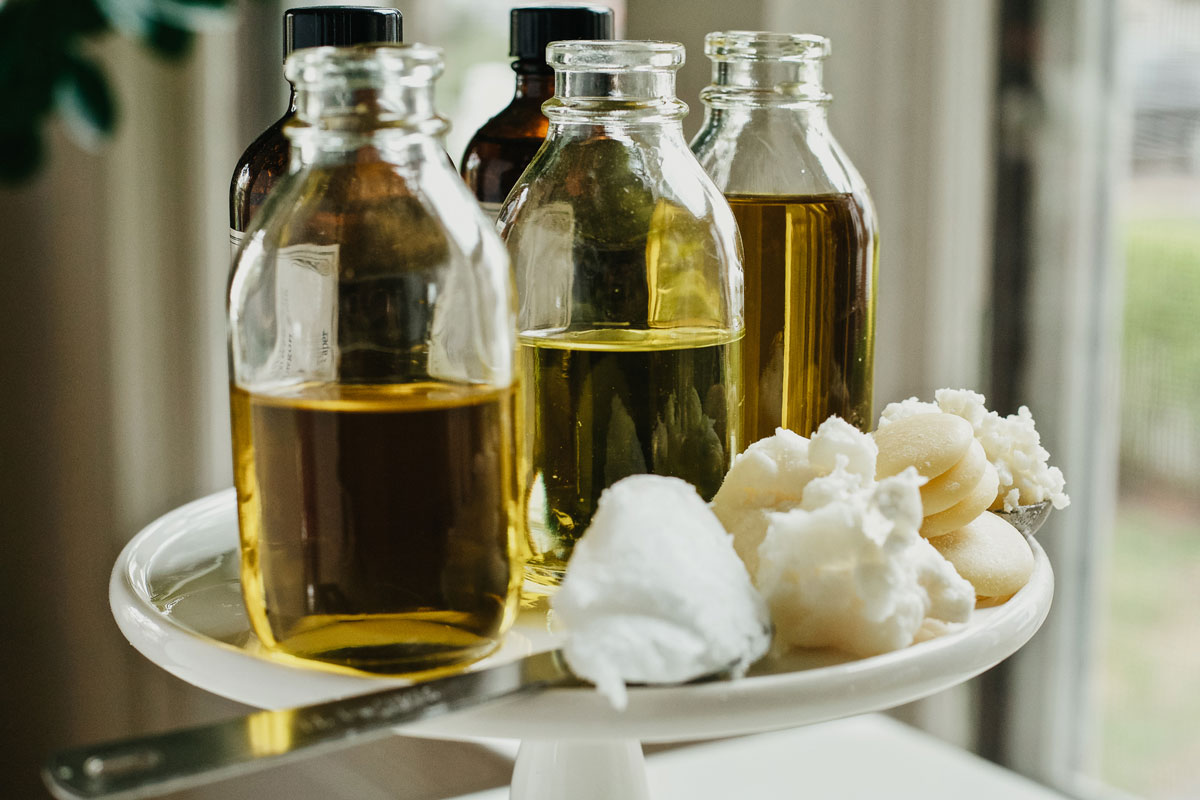
Safer Essential Oils and Carriers
Some of the essential oils that we may consider as either safe (tea tree) or acceptable (wintergreen) for people may not be safe for animals. It is always best to master a few essential oils first, then add to your essential oil toolbox as you have more experience. Before using new essential oils, carefully research their possible effects on the animal you are treating before using them.
The following essential oils are considered relatively safe for most pets, especially dogs and many farm animals:
- Chamomile, German (Blue chamomile) Matricaria recutita
- Chamomile, Roman (Chamaemelum nobile)
- Clary Sage (Salvia sclarea)
- Cypress (Cupressus sempervirens)
- Copaiba, Balsam (Copaifera officinalis)
- Frankincense (Boswellia carterii)
- Ginger (Zingiber officinale)
- Helichrysum (Helichrysum italicum)
- Lavender (Lavandula angustifolia syn. Lavandula officinalis)
- Lemon (Citrus limon)
- Lemongrass (Cymbopogon flexuosus)
- Sweet marjoram (Origanum majorana)
- Mandarin, Red (Citrus reticulata)
- Myrrh (Commiphora myrrha)
- Sweet orange (Citrus sinensis)
- Black pepper (Piper nigrum)
- Sandalwood (Santalum spp.) (Select a sustainable source)
- Black spruce (Picea mariana)
- Ylang ylang (Cananga odorata) (Azzaro, n.d.; Shelton, 2018).
Be sure to double-check your choice of essential oil considering your particular species of pet as well as any other health conditions your pet may be experiencing or drugs your pet may be taking.
The following carriers are helpful for use with pets (be extra cautious in areas an animal might lick):
- Aloe vera gel (Aloe barbadensis) (avoid use with cats or on areas a pet may lick)
- Apricot Kernel Oil (Prunus armenicaca)
- Castor oil (Ricinus communis)
- Coconut (Cocos nucifera)
- Olive (Olea europaea)
- Sesame seed (Sesamum indicum)
- Shea butter (Vitallaria paradoxa syn. Butyrospermum parkii)
- Tamanu (Calopohyllum inophyllum)
- Botanical clays (black rock, green clay, pink kaolin, red clay, white kaolin, bentonite, rhassoul)
- Apple cider vinegar
- Castile soap
Helpful Tools
When using essential oil blends with animals, it is helpful to use a massage therapist-style belt to hold your blends or any tools you may need, such as dropper bottles (for temporary use, not for blend storage), spray bottles, lotion bottles, etc. This keeps the bottles safe from the pet grabbing or knocking bottles over, plus leaves your hands free to handle the bottles and the pet more easily.
Although you should keep pure essential oils in colored glass bottles, these can break if dropped on the cement floor of a kennel or barn. PET plastic containers are helpful to carry diluted blends to use directly with the animals. Count all bottles before leaving a stall or kennel area to be sure not to leave any bottles behind.
Child-safe twist caps help ensure clever pets cannot open bottles. Check that all essential oil bottles also have orifice reducers to ensure that very little may find its way out of a bottle even if it is opened and spills over.
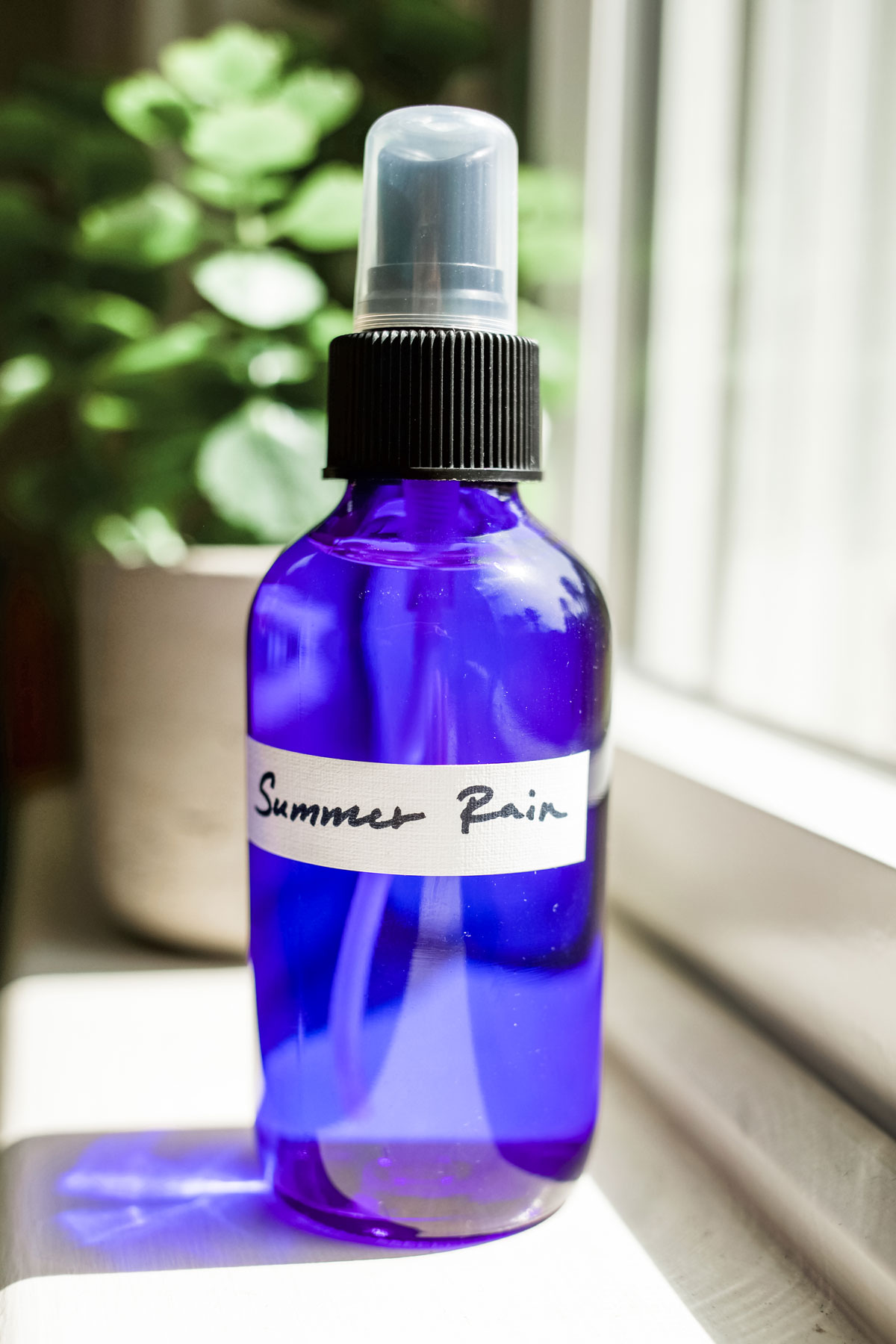
Hydrosols
Hydrosols are an excellent and very safe alternative to using essential oils with our pets. Since they are very diluted and water-based, they are a safer alternative for most pets, even our cats and very young or small animals. Not all essential oils have equivalent hydrosols, and some hydrosols, such as calendula (Calendula officinalis) and plantain (Plantago major), do not exist as essential oils.
Hydrosols are easier to use than essential oils when using compresses and when addressing especially sensitive areas, such as inflamed skin, sunburn, or minor wounds. Hydrosols can also be frozen into ice cubes to provide extra oomph to cold therapies.
When using a hydrosol in the diffuser for an air freshener, bedding freshener, personal spray, or other general use, you don’t need to worry about the same safety concerns as when using an essential oil. Although hydrosols will not work in every instance (e.g., to freshen cat litter), they are an effective, safe alternative for using essential oils with animals.
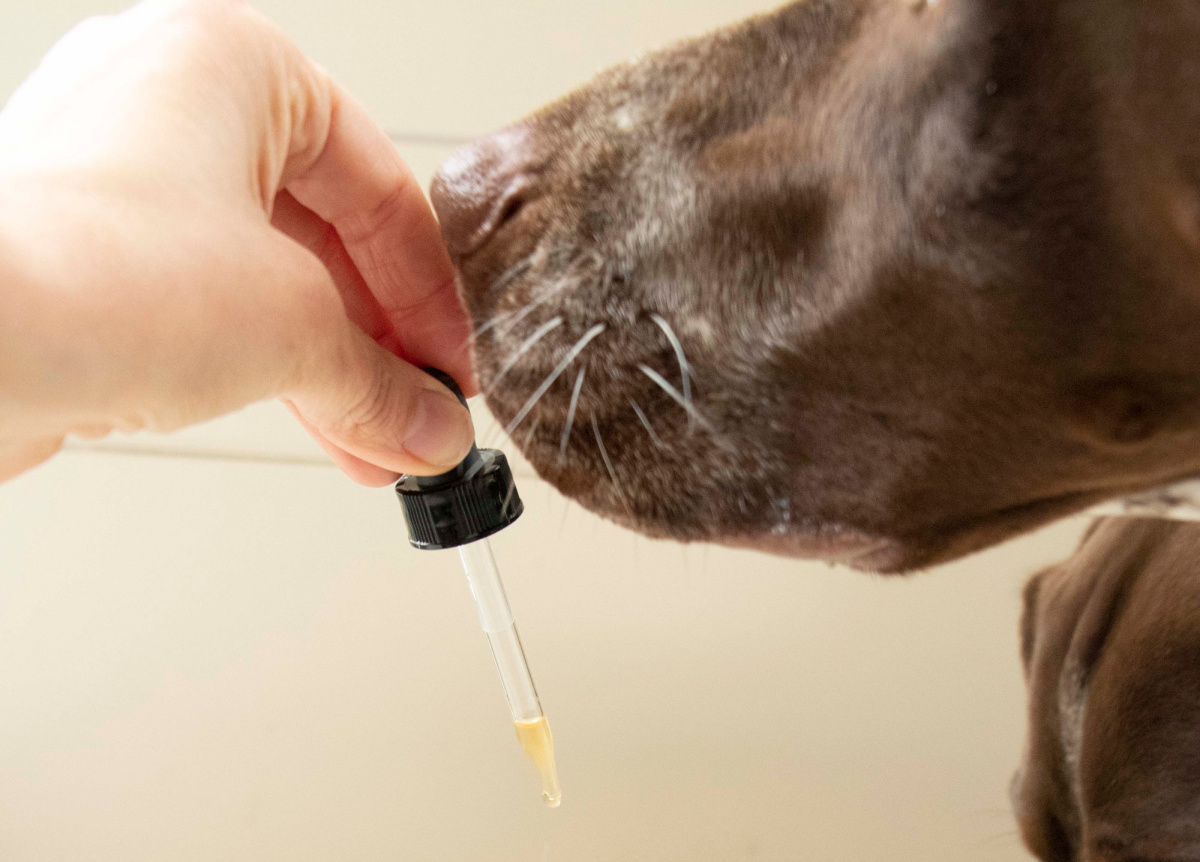
Zoopharmacognosy
A discussion of essential oils for animals would not be complete without mentioning zoopharmacognosy, or animals selecting plants to self-medicate. Some people are strong advocates that any botanical use with an animal must be with the animal’s permission and that the animal knows best. Although animals may choose wisely at times and may demonstrate a preference for one calming essential oil over another, sometimes an emergency situation may require the use of an essential oil or technique the animal may not have chosen for itself. However, using an essential oil that the pet prefers will improve pet compliance and ease the process.
In Closing,
Approach using essential oils with pets similarly to how you would approach using essential oils with children. Use only authentic essential oils and hydrosols from a trusted retailer. Use small amounts and high dilutions of user-friendly, well-known essential oils, or use the corresponding hydrosol. When a situation, such as artritis, is more long-term, use more frequent applications instead of larger doses. Consider how your pet’s sense of smell and different metabolism might affect its tolerance of an essential oil. Home care with essential oils cannot replace a veterinarian’s skill and knowledge. Essential oil and hydrosol use with pets can be enjoyable and safe with proper knowledge and preparation.
Other Resources
Here are several resources that may be helpful in exploring the use of essential oils with animals.
- ASPCA Poison Control https://www.aspca.org/pet-care/animal-poison-control
- ASPCA Poison Control Toxic and Non-Toxic Plants List https://www.aspca.org/pet-care/animal-poison-control/toxic-and-non-toxic-plants
- Essential Oils for Pets? https://www.veterinarypracticenews.com/essential-oils-for-pets/
- Essential oils – Are they safe for pets? http://www.okawvetclinic.com/essential-oils.pml
- Bird and small animal companions: Shelton, M. (2018). The animal desk reference: Essential oils for animals (2nd ed.). Middletown, DE. (Has a section devoted specifically to avian essential oil use. Smaller sections address fish, reptiles, and small mammals.)
- Cats: Barron, E., & Carozza, E. (2018). NOVA cat clinic: Can essential oils harm my cat? https://novacatclinic.com/can-essential-oils-harm-my-cat/
- Ingraham, C. (2017). Help your dog heal itself: A-Z guide to using essential oils and herbs for hidden and common problems through the aromatic language of dogs (2nd ed.). Ingraham Trading Limited.
- Homedes, E. (2011). The handbook of Bach flower remedies for animals [English translation]. Singing Dragon.
- Morag, N. (2011). Essential oils for animals (2nd Ed.). Off The Leash press, LLC.
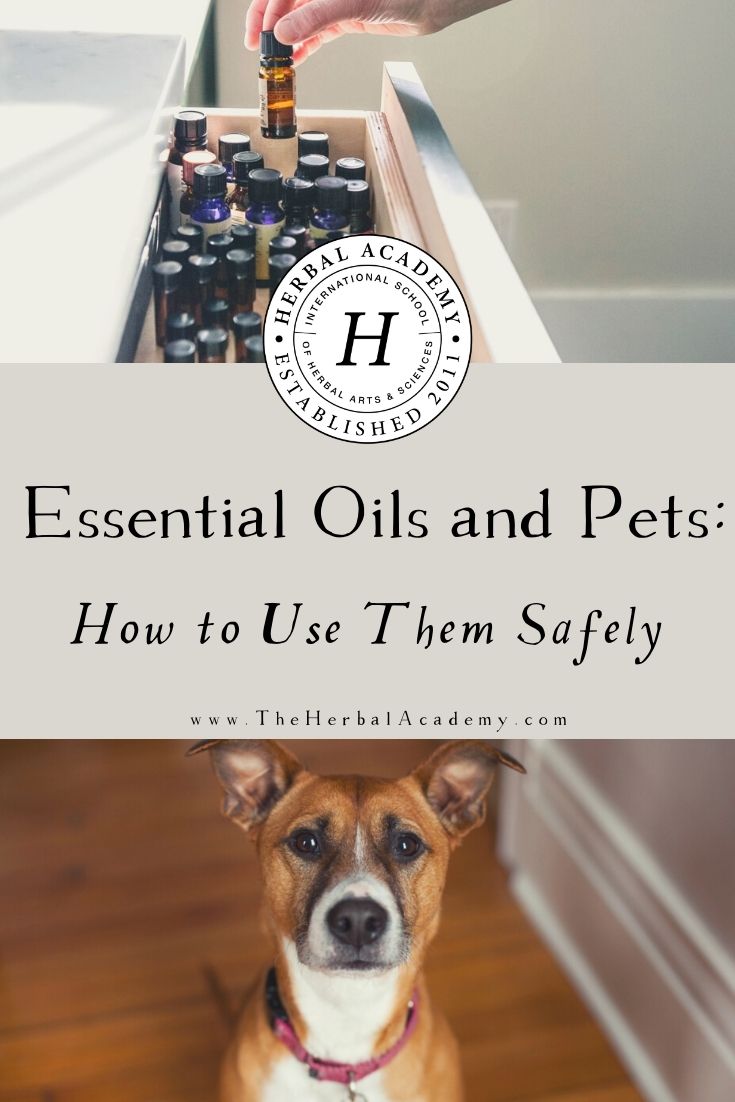
REFERENCES
Azzaro, K.H. (n.d.). Animal aromatherapy level 1 foundation course. Retrieved from animalaromatherapy.com
Shelton, M. (2018). The animal desk reference: Essential oils for animals (2nd ed.). Middletown, DE: CreateSpace Independent Publishing Platform.
Tisserand, R. (2018). Cats and essential oil safety. Retrieved from http://tisserandinstitute.org/cats-essential-oil-safety/
Tyson, P. (2012). Dog’s dazzling sense of smell. Retrieved from https://www.pbs.org/wgbh/nova/article/dogs-sense-of-smell/

